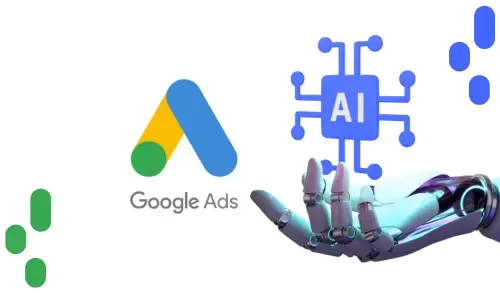In the constantly changing realm of online advertising, it is crucial for businesses to remain at the forefront to optimize their digital footprint. An innovative transformation that has significantly impacted advertising is the incorporation of artificial intelligence (AI) into platforms such as Google Ads. This in-depth guide will thoroughly examine the nuances of Google Ads AI, investigating its functionalities, influence on advertising approaches, and the future it envisions for online marketing.
Understanding Google Ads AI
Google Ads AI, powered by machine learning algorithms, represents a paradigm shift in digital advertising. This technology leverages vast amounts of data to automate and optimize various aspects of ad campaigns, allowing advertisers to reach their target audiences more effectively. The core objective is to enhance the overall advertising experience for both businesses and users.
The Pillars of Google Ads AI
1. Smart Bidding Strategies
One of the standout features of Google Ads AI is its ability to optimize bidding strategies. Smart Bidding, a subset of AI-driven bidding options, utilizes machine learning to analyze historical data and predict the likelihood of a conversion. This empowers advertisers to set automated bids, maximizing the chances of their ads being displayed to users who are more likely to engage.
2. Ad Customization and Personalization
Google Ads AI excels in creating personalized ad experiences. Through dynamic ad content, the platform tailors ad creatives to individual users based on their search behavior, preferences, and demographics. This level of customization enhances user engagement and significantly increases the probability of conversion.
3. Audience Targeting and Segmentation
AI-driven audience targeting is another area where Google Ads shines. The platform analyzes user behavior and identifies patterns to create detailed audience segments. Advertisers can then craft highly targeted campaigns, ensuring their messages resonate with specific user groups, leading to more efficient ad spend.
Impact on Advertising Strategies
1. Efficiency and Cost-Effectiveness
By automating tasks such as bidding and ad targeting, Google Ads AI streamlines campaign management, saving advertisers valuable time and resources. Moreover, the increased efficiency leads to a more cost-effective advertising model, as campaigns are optimized in real-time to achieve maximum impact.
2. Improved Ad Relevance and Quality Score
The personalized nature of Google Ads AI contributes to improved ad relevance. When users see ads that align closely with their interests, they are more likely to engage. This heightened engagement positively influences the Quality Score, a crucial metric in Google Ads that determines the placement and cost of ads. Higher Quality Scores result in lower costs per click and better ad positioning.
3. Data-Driven Decision Making
With Google Ads AI, advertisers gain access to a wealth of data-driven insights. The platform provides comprehensive analytics and reporting, enabling advertisers to make informed decisions based on real-time performance data. This iterative process of analysis and optimization ensures that campaigns remain aligned with business goals.
Future Trends and Considerations
1. Advancements in AI Capabilities
As AI technology continues to evolve, so too will the capabilities of Google Ads AI. Anticipate advancements in natural language processing, image recognition, and predictive analytics, further enhancing the platform’s ability to deliver personalized and contextually relevant ads.
2. Integration with Emerging Technologies
The synergy between Google Ads AI and emerging technologies like augmented reality (AR) and virtual reality (VR) is an area poised for growth. Advertisers may soon explore immersive ad experiences, providing users with interactive and engaging content.
3. Ethical Considerations
As AI plays an increasingly central role in advertising, ethical considerations become paramount. Striking a balance between personalized targeting and user privacy will be crucial. Advertisers must prioritize transparency and user consent to maintain trust in an era where data privacy is a growing concern.
SEO Optimization and Best Practices
Ensuring your content is search engine optimized is crucial for visibility and reach. Here are some key tips:
1. Keyword Research
Identify relevant keywords related to Google Ads AI. Include a mix of short-tail and long-tail keywords to capture a broader audience.
2. Quality Content
Craft well-researched and engaging content. Provide valuable insights and information to keep readers interested.
3. Internal and External Linking
Incorporate internal links to other relevant pages on your website. Include authoritative external links to reputable sources, enhancing the credibility of your content.
4. Meta Tags and Descriptions
Optimize meta tags and meta descriptions with relevant keywords. These elements play a crucial role in search engine rankings.
5. Mobile Optimization
Ensure that your content is mobile-friendly, as a significant portion of internet users access content on mobile devices.
Conclusion
Google Ads AI represents a pivotal moment in the evolution of online advertising. As AI technology continues to advance, businesses that harness the power of Google Ads AI will undoubtedly gain a competitive edge. By understanding the intricacies of this transformative tool, advertisers can create more efficient, personalized, and successful ad campaigns, setting the stage for a future where the intersection of AI and advertising reshapes the digital marketing landscape.
